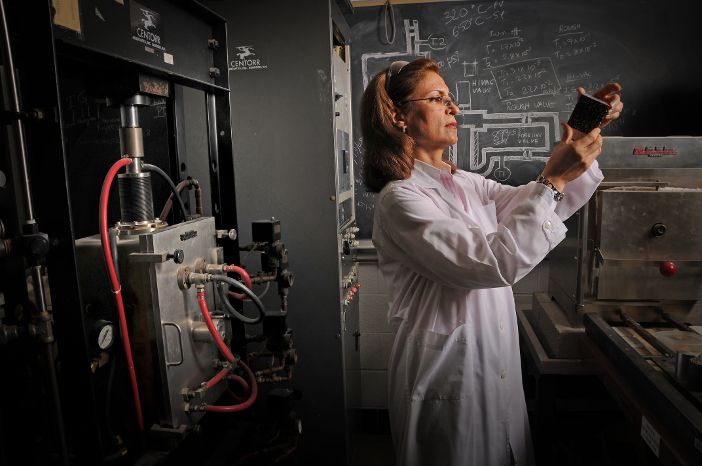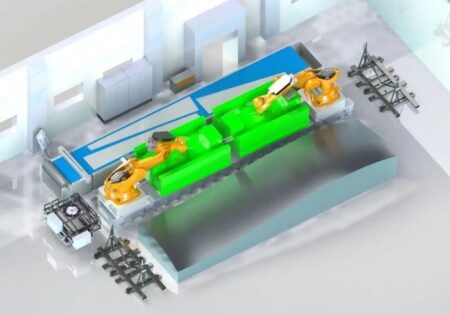Development and testing of composite metal foam (CMF) has been taking place since 2003, but it wasn’t really until the Iraq War when we recognized the need to develop this material to save lives. Since then it’s been a challenging journey to get the technology to where it is today.
Metal foams are a relatively new class of material. They can be up to 95% less dense than regular bulk metals. In most metal foams, premature failure under load is caused by variation in cell size and the thickness of the cells’ walls.
In CMF, hollow spheres are used to create cells that are uniform in shape and size. These cells (porosities) are reinforced by a metal matrix, which is formed around the hollow spheres using casting or a powdered metallurgy technique.
As such, CMF is a stronger metal foam. It is an ultra-high-strength metal matrix composite foam and has a much higher strength-to-density ratio than any other metal foam or bulk metal. The metals we have used so far to produce CMF are mostly aluminum and steel based, due to their low cost, availability and ease of production. But we can make CMF from any mix of metals and alloys.
Under load, the porosities in CMF collapse to give a cushioning effect, like bubble wrap or Styrofoam. Thanks to this phenomenon, although the density of the steel-CMF is a third that of bulk steel, its capability to absorb energy is about two orders of magnitude greater. As such, when used in many structures, CMF offers the same performance with lower weight than the bulk materials, or better performance when used in equal weight.
The key is air. We take air for granted, but it has many purposes for engineers. It helps protect us against radiation in the atmosphere. Bubble wrap and Styrofoam use air to give structure and protection from impact and heat. By using air inside steel, we can offer better protection against impact, heat, radiation, noise and vibration, all of which are important in aerospace. For example, it could be very useful for crash-energy absorption in hard landings of helicopters or to protect against bird strikes.
The most recent experiment conducted at North Carolina State University looked at blasts and the resulting fragments. Researchers fired high-explosive incendiary (HEI) rounds, the type that are used against helicopters, at panels of CMF. The experiment showed that the material can absorb the fragments as well as the blast wave. High-speed cameras were used to record the experiment, and when the results came back it was surprising to see that CMF could stop fragments moving at up to 5,000ft/s (1,500m/s)).
Using computer modeling, we simulated a similar weight of aluminum with the same HEI rounds. The simulation showed how CMF offers more protection against fragments and blast waves than the same weight of aluminum.
The biggest panels we have so far produced are about 1 x 1ft (30 x 30cm). Our next aim is to increase the size of the panels we can make and then start mass production.
There is more work to be done testing and developing the material. We are confident that CMF will be used in many structural applications. It will be used in biomedical devices, trains, automotive, aircraft and spacecraft, as well as in defense applications. It may need additional testing for certain new uses, but we are confident that it will be in every household in the near future.
This article was originally published in the June issue of Aerospace Testing International. To read more articles from the magazine please click here.





